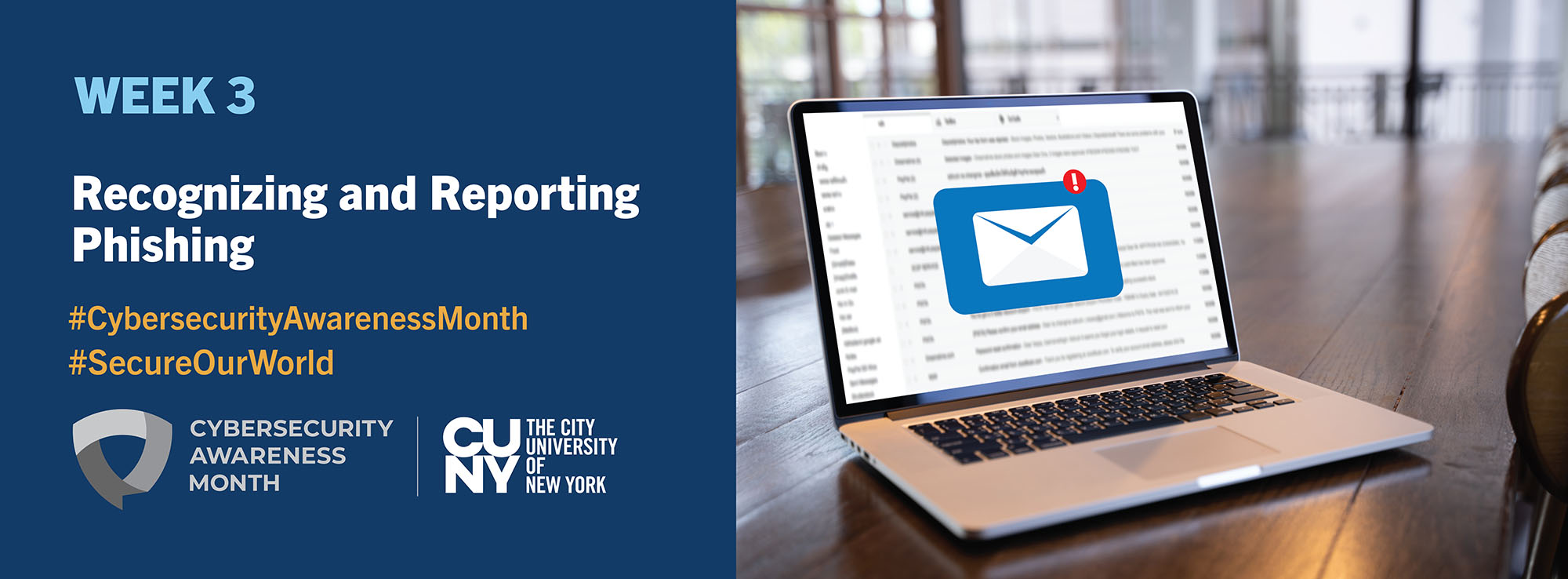
Recognizing and Reporting Phishing
This Week 3 is focused on “Recognizing and Reporting Phishing.” Stay alert for unexpected messages requesting personal information. Refrain from sharing personal or sensitive information like bank account numbers, social security numbers, or student IDs, with unfamiliar sources. If you encounter phishing attempts, report them and delete the message. Always be cautious and take a moment to assess before clicking on links or attachments.
Recognizing and Reporting Phishing Resources:
- Learn how to Recognize and Report Phishing on the National Cybersecurity Awareness Alliance site
- Secure Our World: Phishing Tip Sheet (CISA)
- How to Recognize and Avoid Phishing Scams (Federal Trade Commission)
Helpful Cybersecurity Tips:
- Pause Before Clicking: Take a few seconds to verify if the email is legitimate before clicking any links or attachments
- Watch for Urgent or Alarming Language: Be cautious of emails pressuring you to act quickly or making threatening demands
- Check for Spelling and Grammar Errors: Phishing emails often contain mistakes or poorly written content
- Verify the Sender’s Email Address: Look closely at the sender’s email for minor misspellings or unusual domain names
- Avoid Sharing Personal Information: Legitimate companies won’t ask for sensitive details via email–ignore such requests
Recognizing and Reporting Phishing Facts and Figures:
In response to the National Cybersecurity Alliance 2023 Oh, Behave! report:
- 69% of people feel confident in their ability to identify phishing attempts
- 51% of Americans actively report cybercrimes, with phishing being a common target
- Despite this, over 25% of people still struggle to identify or are unaware of phishing
- 44% of participants frequently report phishing emails using the “spam” or “report phishing” button
Our emails and supporting information are available from the National Cyber Security Awareness Month (NCSAM) page on the CUNY website. We also provide a growing security resources list on the CUNY Information Security pages. You may also want to visit the OUCH! website to read recent security articles or subscribe to the world’s leading, free security awareness newsletter designed for technology users.
If you have any questions about any of this information, please contact your college’s Information Security Manager.